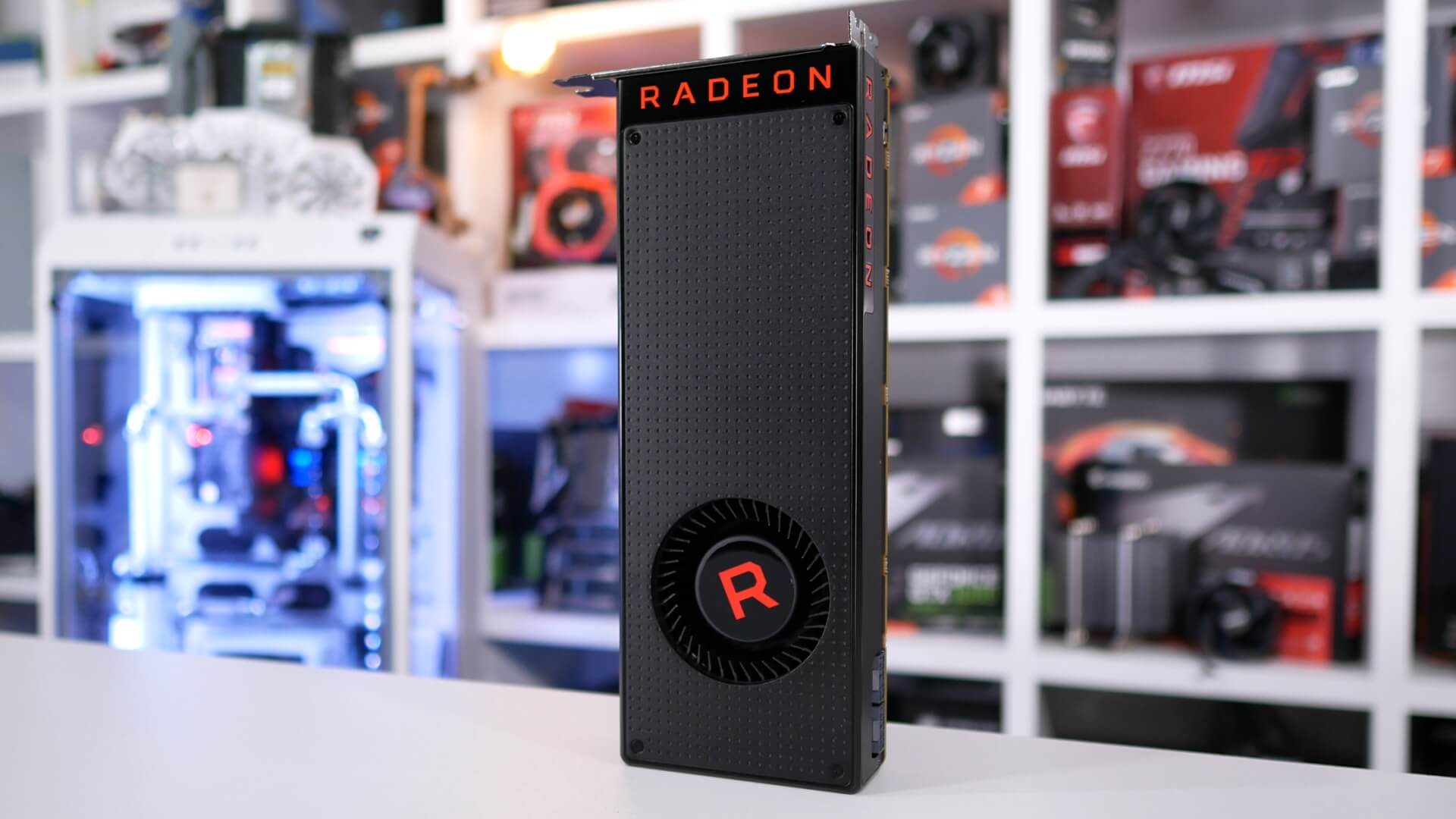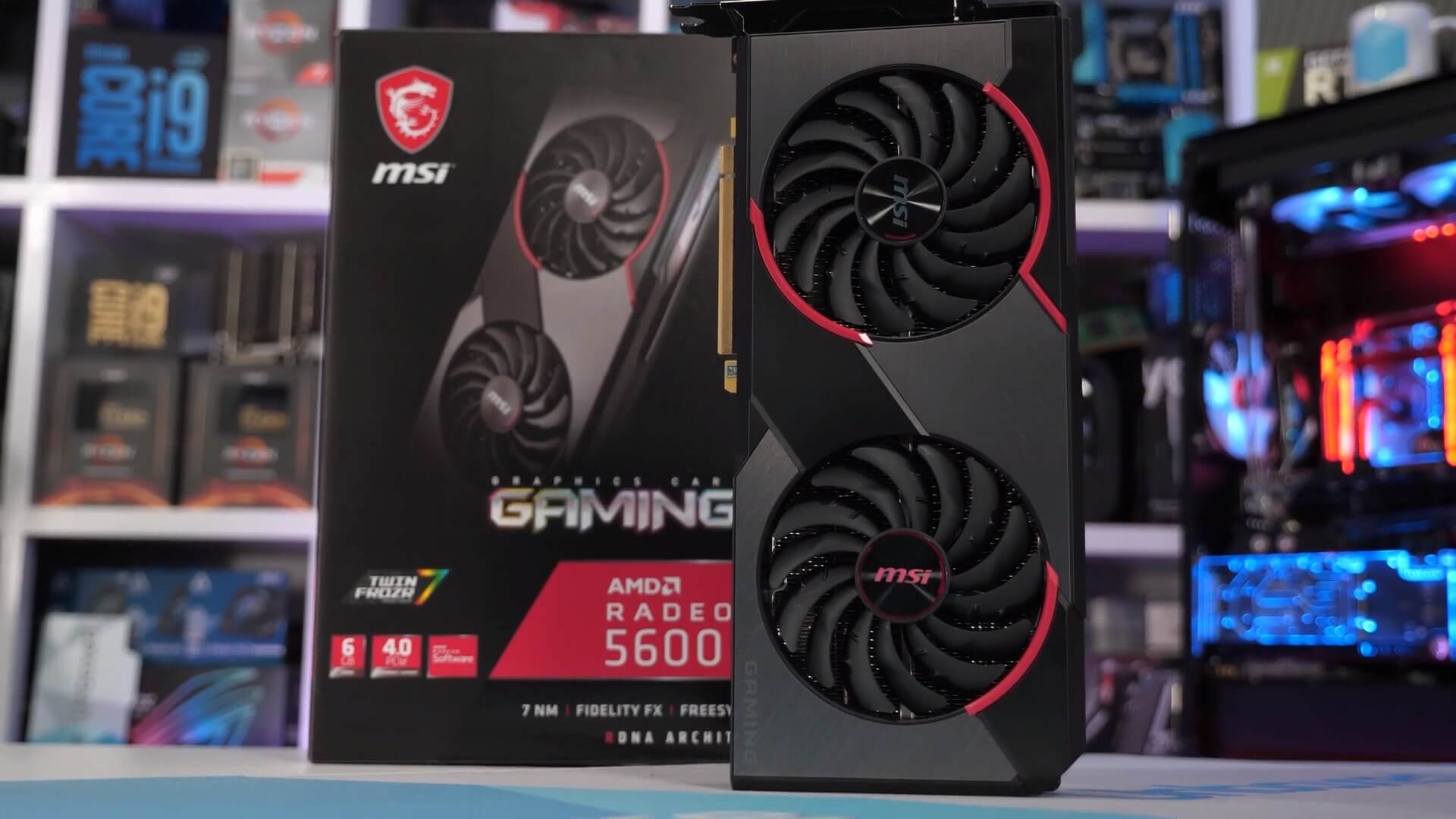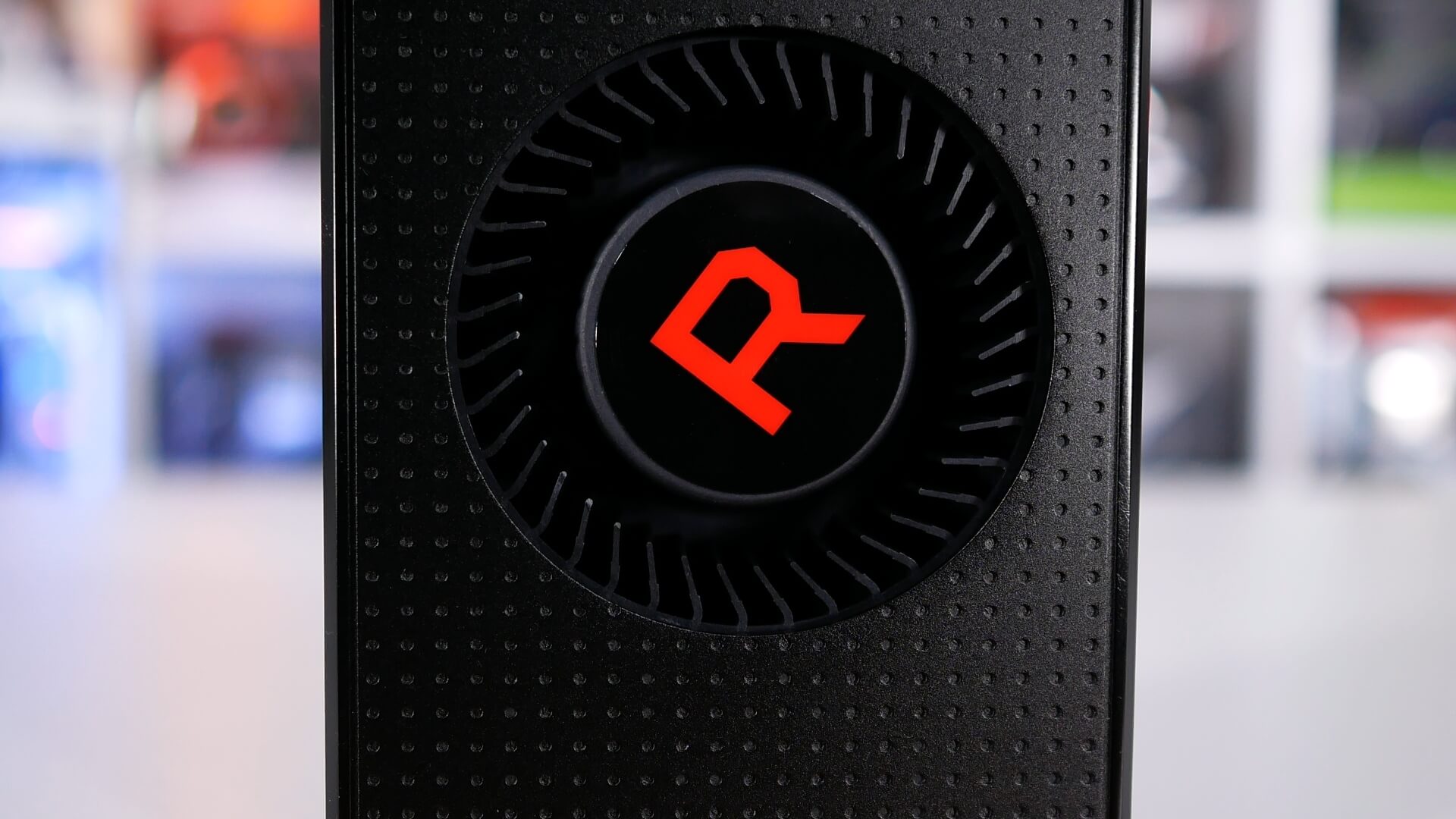After covering the wave of GeForce Super GPUs late last year and the mainstream Navi-based Radeon graphics cards that followed, we've been revisiting several GPUs to see how previous generation products compete at their new discounted prices.
Today we're looking at AMD's Radeon RX Vega 56, originally a $400 product that was meant to compete against the GTX 1070 in mid 2017. If you're wondering why is this relevant, we'd say the main reason is that to this very day, you can buy a Vega 56 graphics cards at a discount. Right now they're selling for as little as $250 in the US. In that same ballpark you can find the GTX 1660 Super for around $230 and AMD's own 5600 XT that starts at $280.
However you should know that the cheapest Vega 56 cards on sale are not good. The $250 MSI Air Boost is the cheapest we could find and it's a hot, loud blower model. There's also the Gigabyte Gaming OC for $280 but it's arguably even worse, the failure rate with this model is worryingly high. Good quality models such as the PowerColor Red Dragon or Sapphire Pulse sell for much higher prices, making them a write off.
For testing we'll be using the Asus Strix model which we upgraded with the correct VRM thermal pads, so it doesn't thermal throttle. Thus, we'll be showing you the best out of the box performance of a Vega 56 card, but we won't be undervolting or tweaking the card in any way. We don't like to test these cards overclocked or undervolted, which is essentially the same thing, because while some cards will feature a stud of a GPU, others will have duds and unless you're willing to buy maybe half a dozen before you win the silicon lottery, testing with the GPU undervolted and acting like that's the norm, can be very misleading.
All testing was performed in our GPU test rig powered by a Core i9-9900K overclocked to 5 GHz with 16GB of DDR4-3400 memory. But before getting into the fps charts, let's take a look at power consumption.

Vega 56 was a power pig and Navi has gone a long way to correct that. Here we see that total system usage has been dropped by almost 40% with the 5600 XT, that's obviously a huge power saving, so it will be interesting to see how they compare in terms of performance.
Benchmarks
First up we have the Assassin's Creed Odyssey and here the 5600 XT was 8% faster than Vega 56 at 1080p and 7% faster at 1440p. This is not a massive difference, but given how much more efficient the 5600 XT is, this really is a huge step forward for AMD.

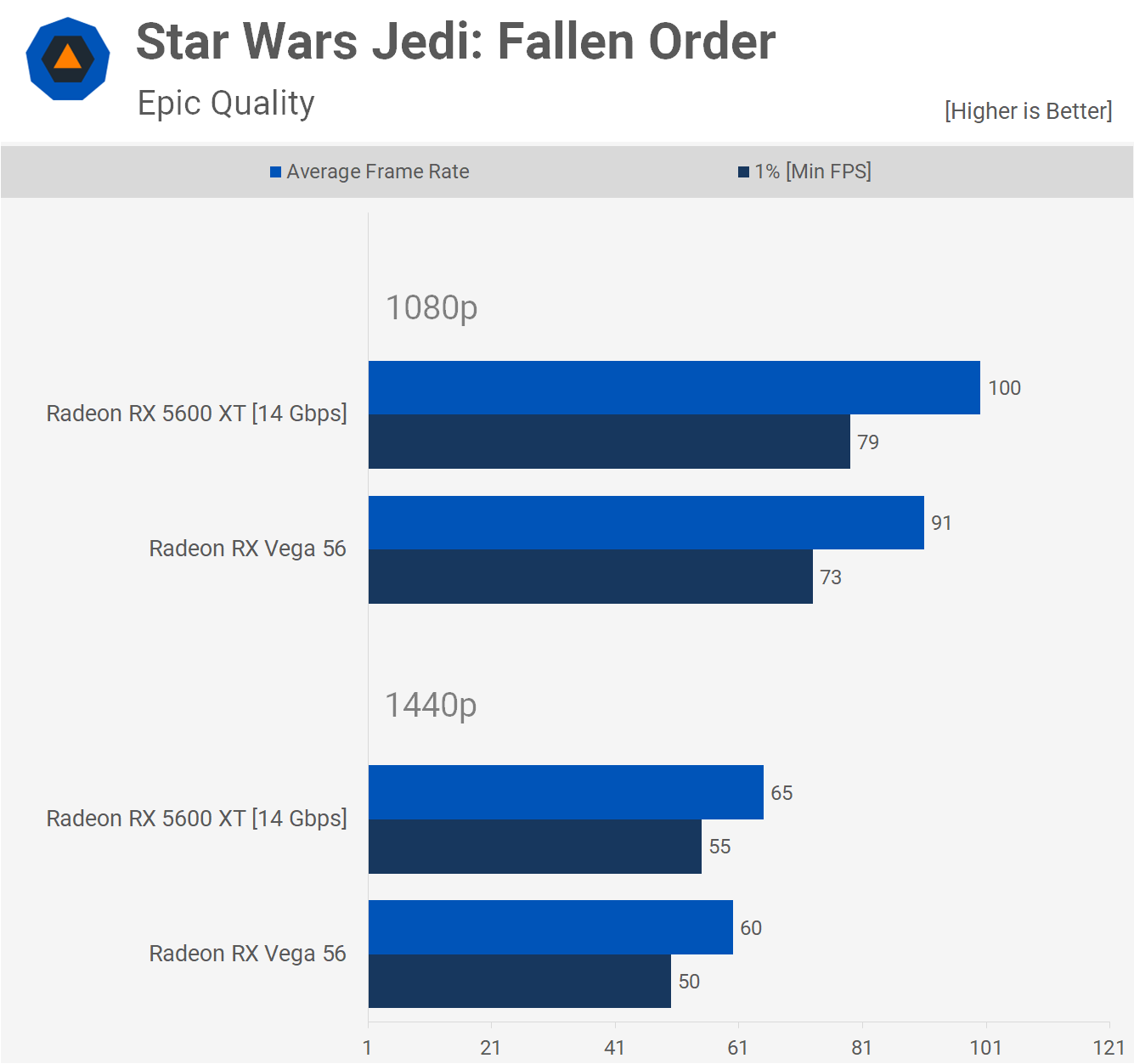
Star Wars Jedi: Fallen Order is another example where the 5600 XT is up to 10% faster than Vega 56, an impressive gain given the difference in power consumption.
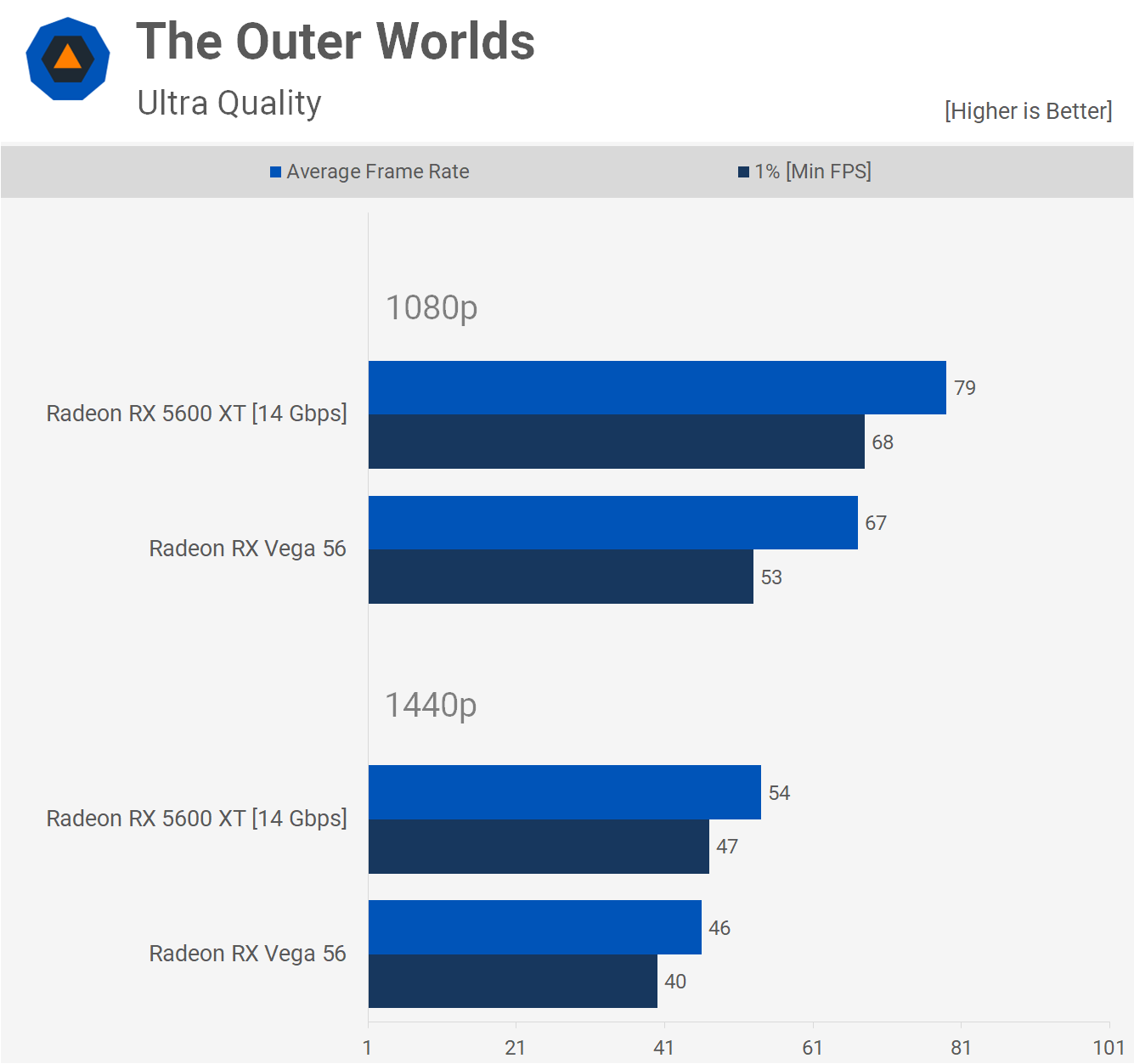
The Outer Worlds results are interesting as traditionally AMD has struggled with their GCN architecture in games using the Unreal Engine. Here the 5600 XT offers big performance gains of almost 30% when looking at 1% low performance and 18% for the average frame rate, so a big step up in performance from Vega 56.

We're back to a 9% performance advantage in favor of the 5600 XT when testing with Call of Duty Modern Warfare at 1080p.
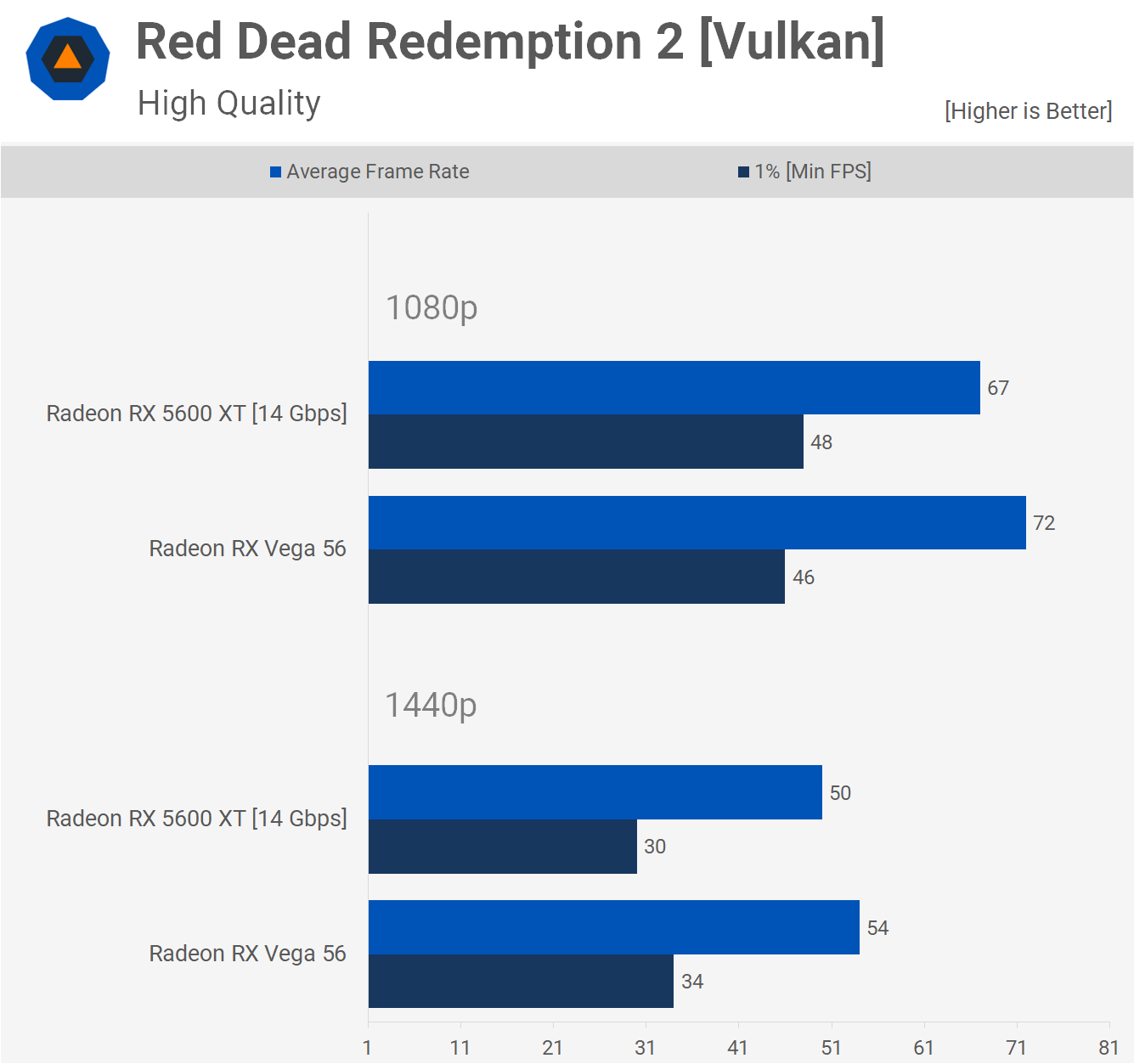
The extra 2GB of VRAM will be helping out Vega 56 in Red Dead Redemption 2, but even so performance is still very close with the 5600 XT only tailing by a 7% margin.

Performance in Control is even, here the 5600 XT was less than 5% faster at both tested resolutions when comparing the average frame rates.

Performance in World War Z is also competitive, we suspect Vega 56 does a little better at 1440p due to the extra VRAM, but overall we're looking at a very similar gaming experience with either GPU.

The F1 2019 results are very surprising. In the past Vega performed well in the F1 titles, though we tested with DX11. We'd expect Vega 56 to perform very well using DX12, but that's not the case here, at least relative to the 5600 XT. The 5600 XT was a whopping 26% faster at 1080p and 22% faster at 1440p, so a significant uplift for the newer Navi.

We see virtually identical performance in Rainbow Six Siege using the new Vulkan API, though Vega 56 does pull away ever so slightly at 1440p and again we believe this is due to that extra 2GB of VRAM.
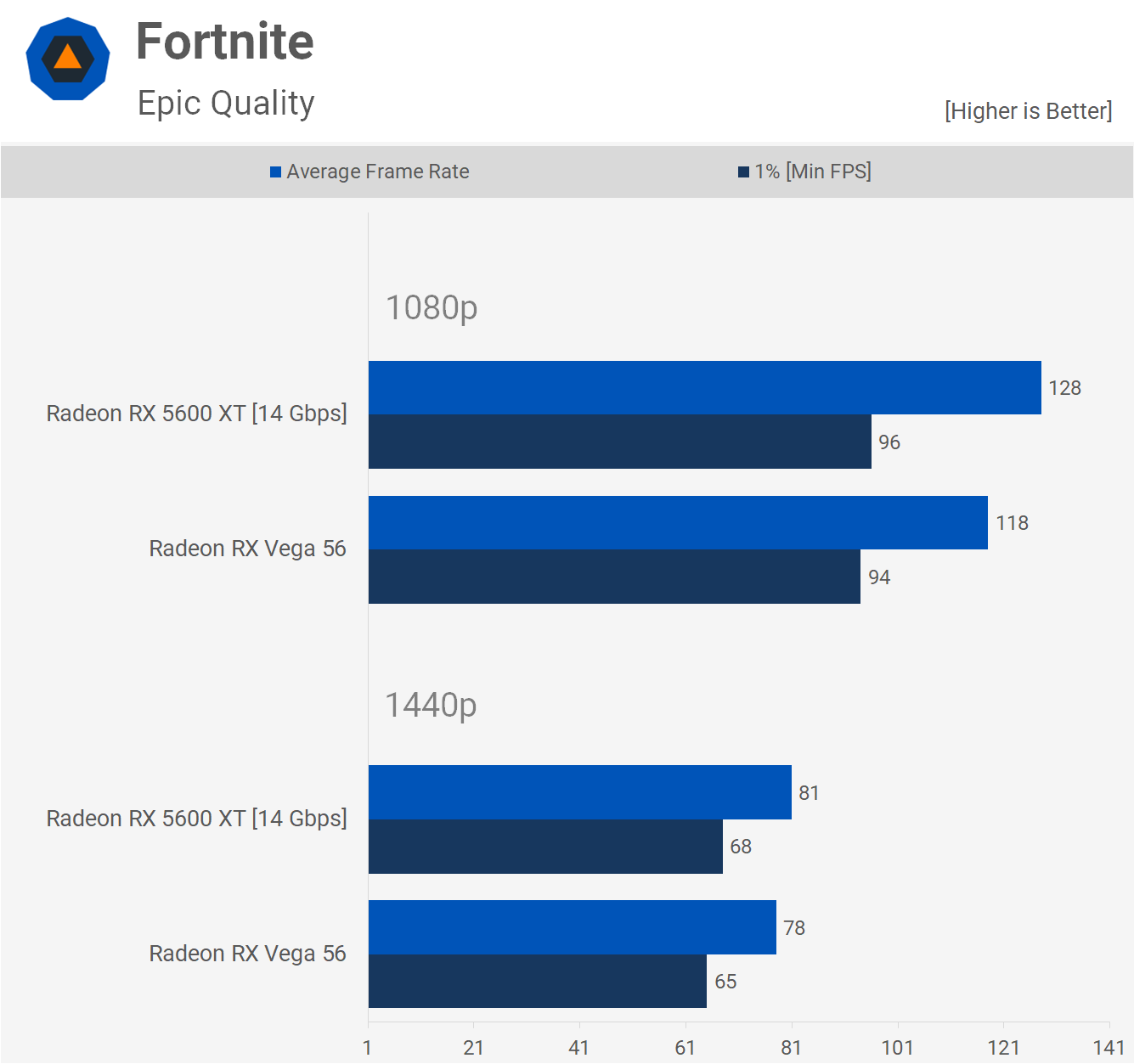
The 5600 XT is also able to edge ahead of Vega 56 in Fortnite, delivering 8% more frames on average at 1080p. Performance at 1440p is basically identical.

Next up we have Gears 5 and here the 5600 XT offers strong gains over Vega 56, boost performance at 1080p by 17% and 13% at 1440p.

The Shadow of the Tomb Raider results are competitive and here the 5600 XT is just 6% faster at 1080p while delivering virtually identical performance at 1440p.
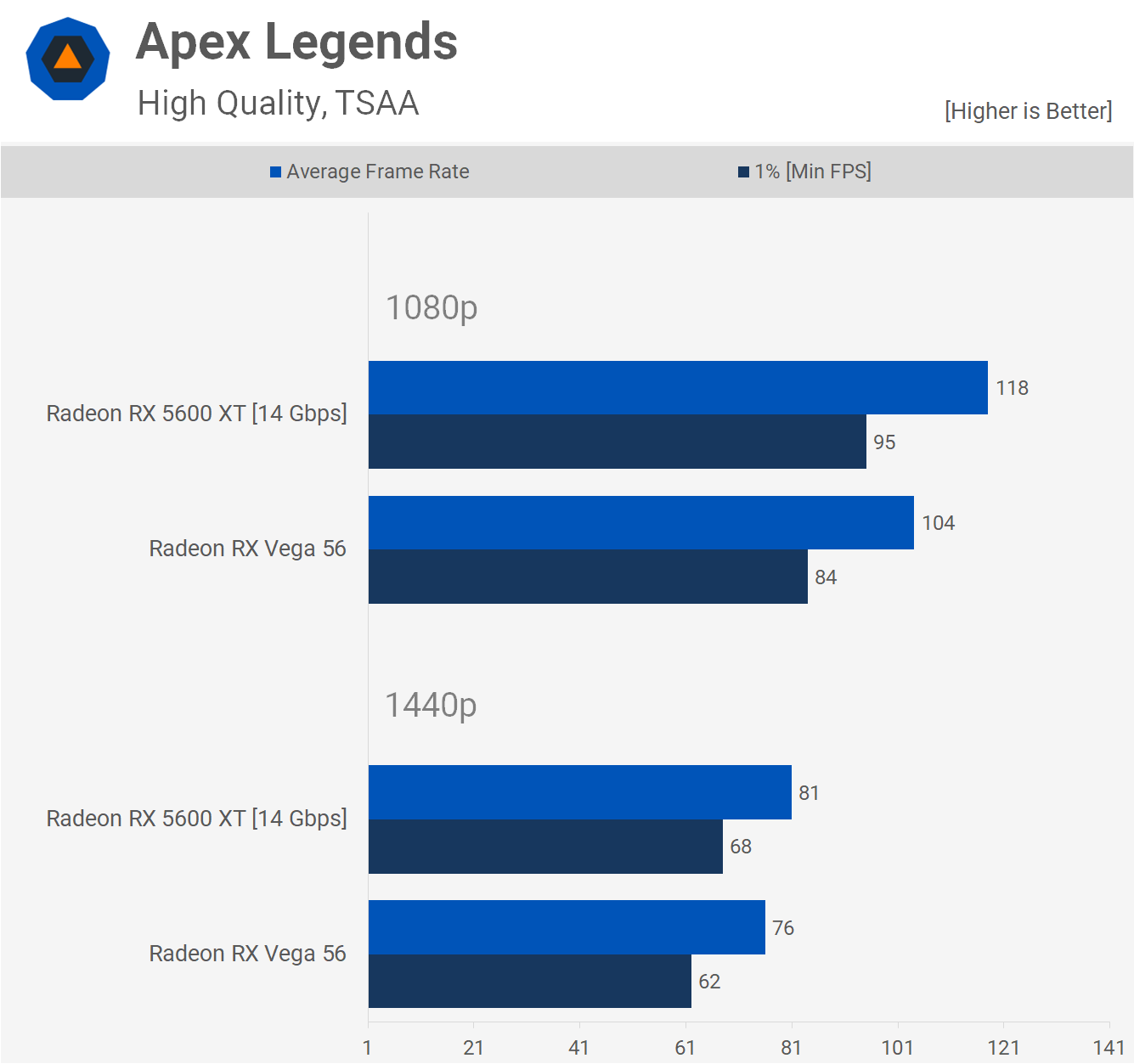
A more typical 13% performance boost is seen when testing with Apex Legends at 1080p and as we've seen many times now, the margin is reduced at 1440p, this time down to 7% in favor of the 5600 XT.
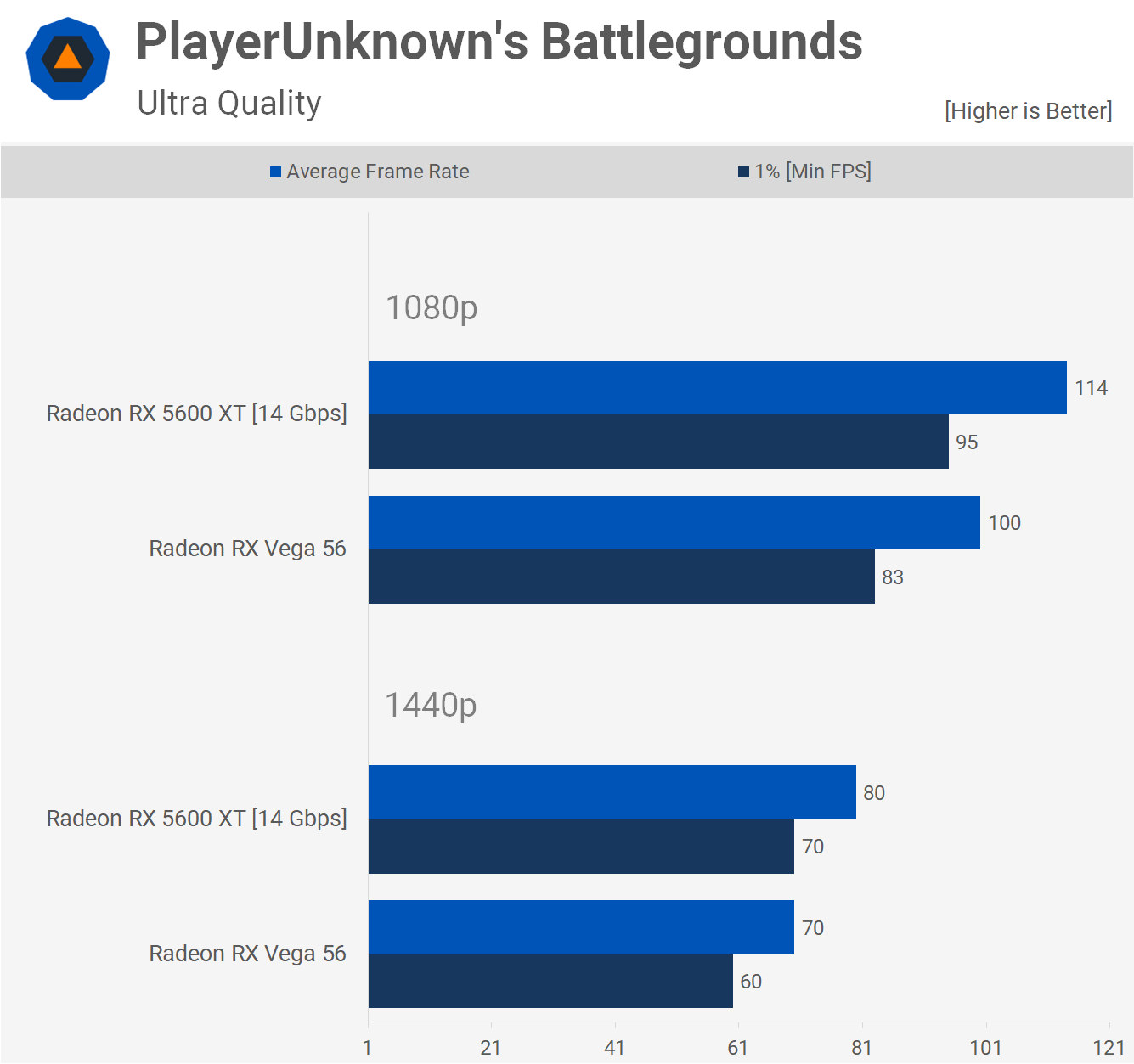
Last up we checked out PUBG which typically isn't a strong title for AMD. Navi does go a long way in improving AMD's position, at both tested resolutions the 5600 XT was 14% faster than Vega 56.
Performance Summary
Given how massive the Vega 56 die is and the fact that it packs more transistors, way more cores, and sports HBM2 memory for over a 20% increase in bandwidth, it's remarkable what AMD has achieved with the much smaller Navi die. Yes, a portion of the gains can be attributed to the 7nm process, but there's also a big chunk of this that can be attributed to the RDNA architecture. Before we go too far into that conversation, here's a look at how Vega 56 and the 5600 XT compare head to head in the 32 titles we tested.

We can see that at 1080p, the 5600 XT was on average 8% faster than Vega 56. The only title where Vega 56 enjoyed a significant performance advantage was Sniper Elite 4, a title which was optimized for the GCN architecture, so that makes sense. Vega was also a tad faster in Red Dead Redemption 2 which we believeis more of a VRAM issue. We also saw identical performance in Strange Brigade, World War Z, Resident Evil 2, Rainbow Six Siege, Battlefield V, DiRT Rally and Control.
Many other titles favored Navi including F1 2019, Ghost Recon Breakpoint, The Outer Worlds, Gears 5, The Witcher 3, PUBG and a number of other titles.

Moving to 1440p we see more of the same though the 5600 XT's lead erodes a little. At this higher resolution the newer Navi GPU was 6% faster, and overall a more consistent performer.
What We Learned
AMD has made a gigantic leap with the RDNA architecture and 7nm manufacturing process. The Radeon 5600 XT uses around half the power of a Vega 56 GPU, while also delivering a little extra performance. These results are inline with AMD's own claims of a 50% performance uplift with RDNA when compared to a GCN-based GPU using the same level of power. They also claim that ~20-25% of this uplift is delivered by the 7nm process shrink, with the bulk coming from their improvement in performance per clock.
Clearly given the massive efficiency improvement, and the fact that it's faster out of the box, we believe you're far better off with the newer Radeon GPU. Moving forward AMD will be spending more time optimizing gaming performance for RDNA, so expect the gap to widen over time.

